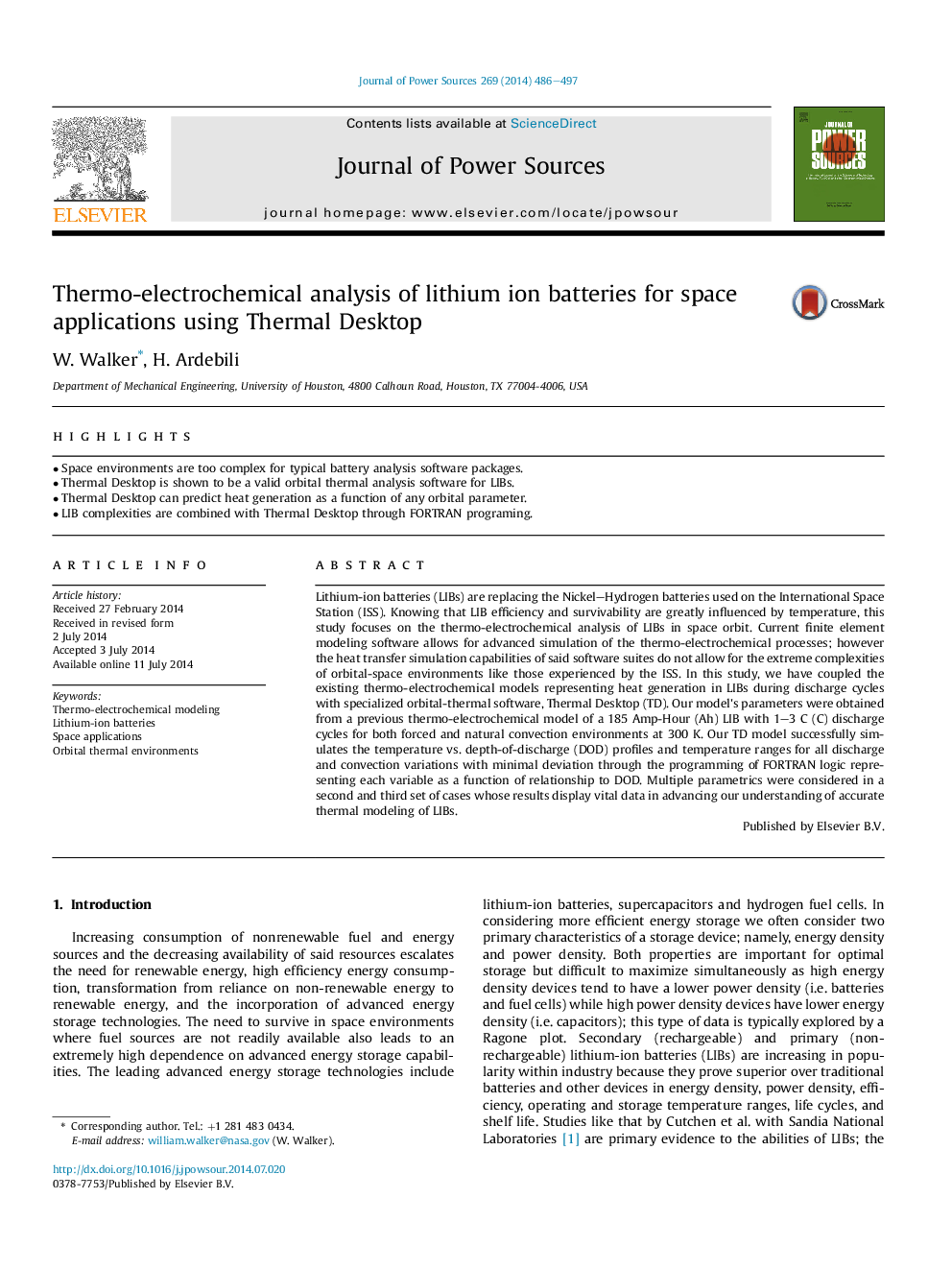| Article ID | Journal | Published Year | Pages | File Type |
|---|---|---|---|---|
| 7736254 | Journal of Power Sources | 2014 | 12 Pages |
Abstract
Lithium-ion batteries (LIBs) are replacing the Nickel-Hydrogen batteries used on the International Space Station (ISS). Knowing that LIB efficiency and survivability are greatly influenced by temperature, this study focuses on the thermo-electrochemical analysis of LIBs in space orbit. Current finite element modeling software allows for advanced simulation of the thermo-electrochemical processes; however the heat transfer simulation capabilities of said software suites do not allow for the extreme complexities of orbital-space environments like those experienced by the ISS. In this study, we have coupled the existing thermo-electrochemical models representing heat generation in LIBs during discharge cycles with specialized orbital-thermal software, Thermal Desktop (TD). Our model's parameters were obtained from a previous thermo-electrochemical model of a 185Â Amp-Hour (Ah) LIB with 1-3Â C (C) discharge cycles for both forced and natural convection environments at 300Â K. Our TD model successfully simulates the temperature vs. depth-of-discharge (DOD) profiles and temperature ranges for all discharge and convection variations with minimal deviation through the programming of FORTRAN logic representing each variable as a function of relationship to DOD. Multiple parametrics were considered in a second and third set of cases whose results display vital data in advancing our understanding of accurate thermal modeling of LIBs.
Related Topics
Physical Sciences and Engineering
Chemistry
Electrochemistry
Authors
W. Walker, H. Ardebili,
